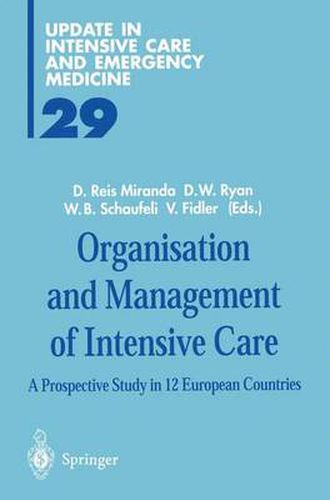Readings Newsletter
Become a Readings Member to make your shopping experience even easier.
Sign in or sign up for free!
You’re not far away from qualifying for FREE standard shipping within Australia
You’ve qualified for FREE standard shipping within Australia
The cart is loading…






This title is printed to order. This book may have been self-published. If so, we cannot guarantee the quality of the content. In the main most books will have gone through the editing process however some may not. We therefore suggest that you be aware of this before ordering this book. If in doubt check either the author or publisher’s details as we are unable to accept any returns unless they are faulty. Please contact us if you have any questions.
From the viewpoint of a health economist, the intensive care unit (leU) is a particularly fascinating phenomenon. It is the epitome of high-tech medicine and frequently portrayed as the place where life-saving miracles are routinely wrought. But the popular imagina tion is also caught up in the darker side, when agonizing decisions have to be made to avoid futile and inhuman continuation of expen sive treatments. My analytical interests led me to approach these issues by asking what the evidence tells us about which leu activities are very bene ficial in relationship to their costs and which are not. This quickly translates into a slightly different question, namely, which patients are most appropriately treated in an leu and which not. Unfor tunately, it is very hard to answer these questions because it has pro ved very difficult to investigate these issues in the manner which is now regarded as the gold standard:‘ namely by conducting rando mized clinical trials or alternative courses of action. I think this is a pity, and I am not at all convinced that it would be unethical to do so in many cases, because there is wide variation in practice and ge nuine doubt as to which practices are best -the two conditions that need to be fulfilled before such a trial is justifiable.
$9.00 standard shipping within Australia
FREE standard shipping within Australia for orders over $100.00
Express & International shipping calculated at checkout
This title is printed to order. This book may have been self-published. If so, we cannot guarantee the quality of the content. In the main most books will have gone through the editing process however some may not. We therefore suggest that you be aware of this before ordering this book. If in doubt check either the author or publisher’s details as we are unable to accept any returns unless they are faulty. Please contact us if you have any questions.
From the viewpoint of a health economist, the intensive care unit (leU) is a particularly fascinating phenomenon. It is the epitome of high-tech medicine and frequently portrayed as the place where life-saving miracles are routinely wrought. But the popular imagina tion is also caught up in the darker side, when agonizing decisions have to be made to avoid futile and inhuman continuation of expen sive treatments. My analytical interests led me to approach these issues by asking what the evidence tells us about which leu activities are very bene ficial in relationship to their costs and which are not. This quickly translates into a slightly different question, namely, which patients are most appropriately treated in an leu and which not. Unfor tunately, it is very hard to answer these questions because it has pro ved very difficult to investigate these issues in the manner which is now regarded as the gold standard:‘ namely by conducting rando mized clinical trials or alternative courses of action. I think this is a pity, and I am not at all convinced that it would be unethical to do so in many cases, because there is wide variation in practice and ge nuine doubt as to which practices are best -the two conditions that need to be fulfilled before such a trial is justifiable.